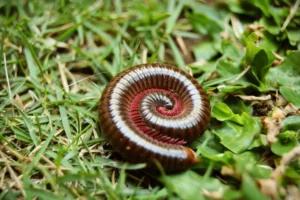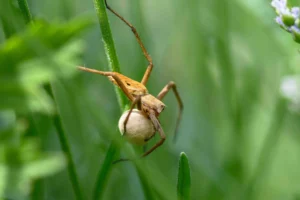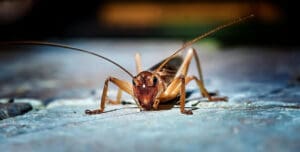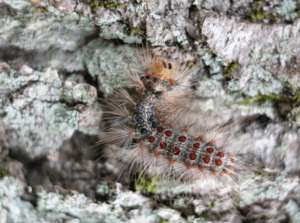
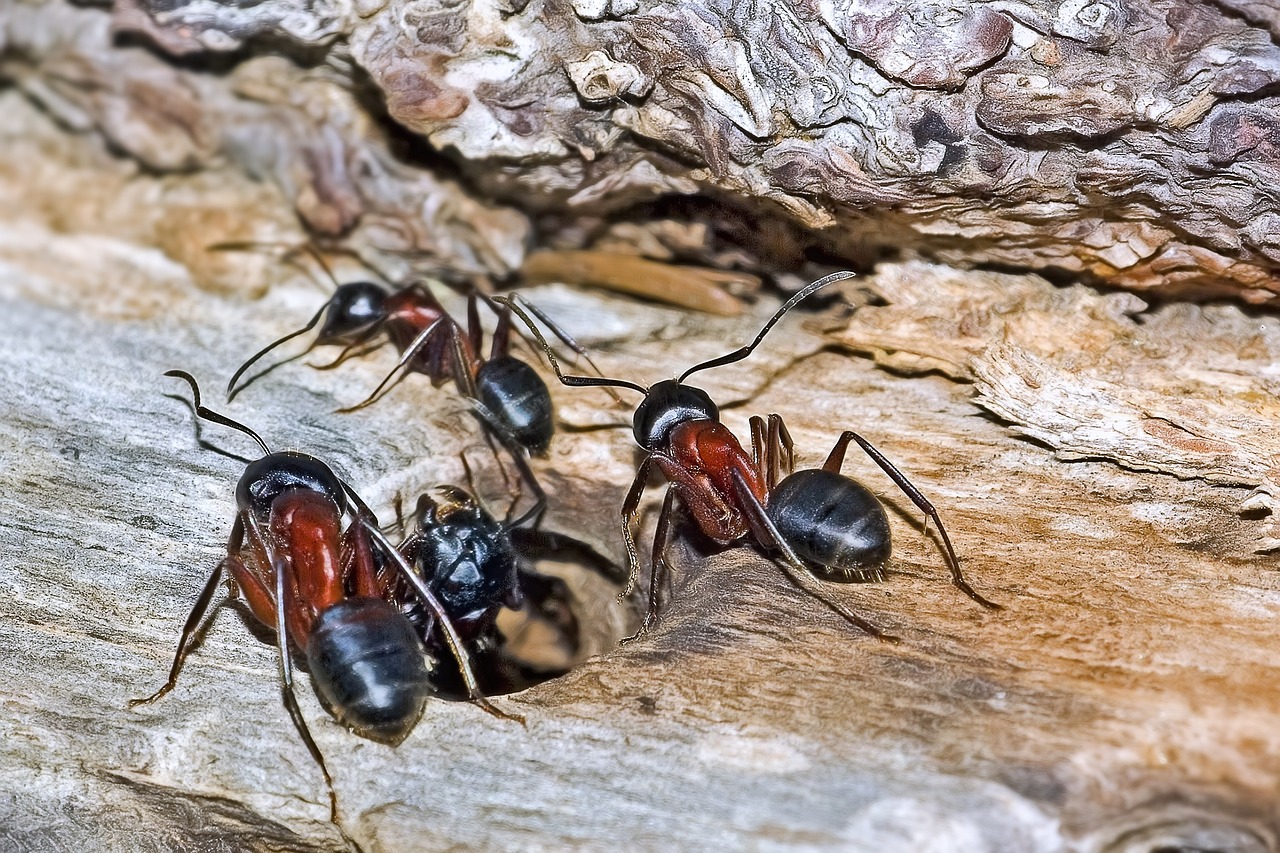
Carpenter Ants VS Termites: Differentiating Between Wood-Destroying Pests
October 2, 2023
Carpenter ants and termites are two of the most destructive pests in the insect world, and both should be eliminated as quickly as possible once they invade a home or business. Before an infestation can be dealt with though, you first need to know which pest you are up against. This guide will give you everything you need to know to determine whether your property is crowded with carpenter ants or teeming with termites.
Appearance: How To Identify Wood-Destroying Pests
Carpenter Ants
Carpenter ants are typically large ants, measuring between 6 to 13 millimeters in length. They have a distinctive appearance with a black or reddish-brown coloration. Their bodies are segmented, featuring a narrow waist, and they have bent antennae. Carpenter ants are known for their strong mandibles, which they use to excavate wood for nesting. They may also have wings during the breeding season, with larger front wings and smaller hind wings.
Termites
Termites are small, pale insects, typically ranging from 4 to 10 millimeters in length. They have soft, elongated bodies with a straight waist, lacking the distinct segmentation seen in ants. Their coloration can vary from creamy white to light brown, and they have straight, bead-like antennae. Swarmer termites possess two pairs of equal-sized wings, which are long and narrow, and are often longer than their bodies. Termites’ appearance is often described as translucent or pale.
Key Differences:
- Carpenter ants are typically larger than termites
- Carpenter ants have pinched waists, termites have straight waists
- Carpenter ants have bent antennae, termites have straight, beaded antennae
- Winged carpenter ants have larger front wings and shorter back wings, winged termites have two pairs of equal-length wings
Habitat, Diet, and Behavior
Carpenter Ants
Carpenter ants are commonly found in various forested habitats, nesting in decayed or moisture-damaged wood. They are known for excavating galleries in structural wood to create their nests, which can cause serious damage in buildings. Their diet primarily consists of sugars and protein, foraging for insects, nectar, and honeydew. Contrary to what many believe, carpenter ants do not consume wood like termites do. Carpenter ants exhibit complex social behavior, living in colonies with a queen, worker ants, and sometimes winged reproductives. They're primarily active at night and communicate through pheromones.
Termites
Termites thrive in various habitats, particularly in warm, humid regions, and are also known for their destructive behavior. They construct intricate mud tunnels and chambers within wood or soil for nesting and foraging, causing extensive damage to wooden structures. Depending on their type, termites live either in dry wood, damp and decaying wood, or soil. Unlike carpenter ants, termites do indeed eat wood, as well as other cellulose-rich materials like plant debris and soil. Similar to ants, termites live in large colonies with a caste system of workers, soldiers, and reproductive individuals, often including a king and queen. Termites are active during all hours of the day and are most active after a rainfall. They communicate through vibrations as well as pheromones.
Key Differences:
- Carpenter ants do not eat wood, termites do eat wood
- Carpenter ants are most active at night, termites are active all day and night
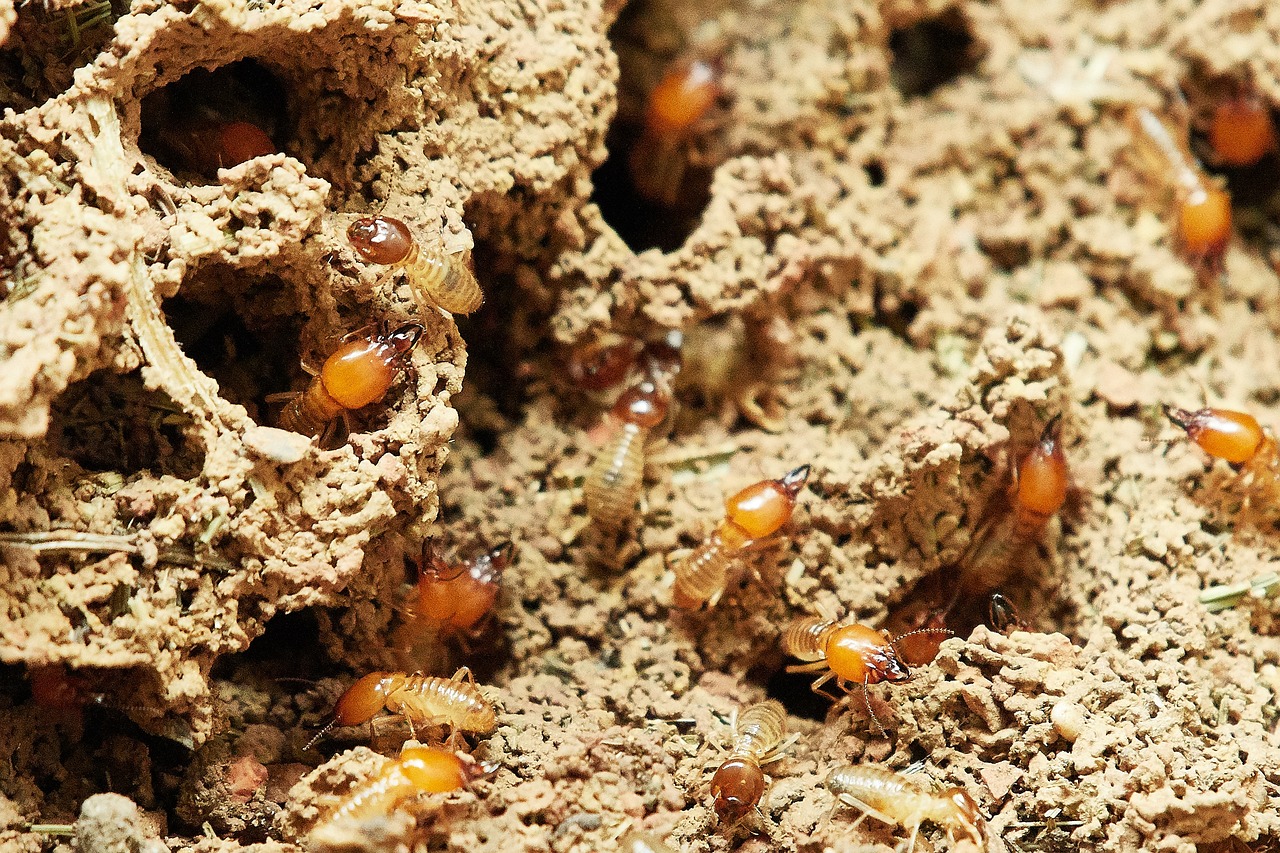
Signs of an Infestation: What To Look For
Carpenter Ants
Signs of a carpenter ant infestation include the presence of large, dark ants in and around your home or business, particularly near wooden structures. Look for sawdust-like wood shavings, called frass, near nesting areas. You might also hear rustling sounds in walls if the infestation is severe. Damaged, hollow-sounding wood and small, round holes in wooden surfaces are additional indicators, as are sagging floors, and buckling paint or wallpaper. Swarmers, or winged reproductive ants, emerging indoors during spring signal a mature colony. Persistent ant trails leading to food sources are common too.
Termites
Signs of a termite infestation include the presence of swarming termites, usually during spring. Look for discarded wings near windows and light sources. Mud tubes or tunnels on foundation walls or wooden structures are a clear indicator of their presence. Termites also leave frass piles, however their frass looks more like coffee grounds or pepper. Damaged, hollow-sounding wood, sagging floors, and buckling paint or wallpaper can also suggest infestation. Additionally, small, pale, ant-like insects in or around your home could be termites.
Key Differences:
- Carpenter ant frass looks like sawdust, termite frass looks like coffee grounds or pepper
- Ant trails are a sign of carpenter ants, mud tubes are a sign of termites
Damages and Dangers Posed By Wood-Destroying Pests
Both carpenter ant and termite infestations pose significant dangers to the structures of homes and businesses. They excavate or consume wood to create their nests, weakening wooden beams, frames, and other structural elements. This compromises the integrity of buildings which can be quite dangerous and also leads to costly repairs. Additionally, these pests can cause electrical problems by tunneling through wiring. Since carpenter ants and termites often go unnoticed until significant damage is done, they tend to cause hidden problems. Furthermore, the presence of wood-destroying pests may impact property values and make properties less attractive to potential buyers.
While termites cannot bite, carpenter ants may bite when threatened. They cannot transmit diseases to humans, though their bites can be painful and cause allergic reactions. Both carpenter ants and termites can also trigger asthma symptoms in susceptible individuals. What’s more, the stress caused by infestations of wood destroying pests can be detrimental to overall health.
Preventing All Wood-Destroying Pests
Carpenter Ants
To prevent carpenter ant infestations, start by eliminating potential nesting sites and food sources. Keep woodpiles and debris away from your home or business and trim branches that touch the structure. Seal cracks, gaps, and openings in your home or business's foundation and around windows and doors. Repair any moisture-related issues like leaky pipes or roofs, as carpenter ants are attracted to damp wood. Store food in airtight containers, clean up crumbs promptly, and avoid leaving pet food out overnight. Regularly inspect your property for signs of carpenter ants, and if you suspect an infestation, seek professional pest control for timely intervention.
Termites
Preventing termites starts with moisture control; repair any leaks and ensure proper drainage around your home or business's foundation. Remove wood-to-soil contact by keeping firewood, mulch, and plantings away from your home or business. Seal cracks and crevices, and use termite-resistant materials when building or renovating. Regularly inspect your property for signs of termites, such as mud tubes, discarded wings, or damaged wood. Consider installing a termite barrier or using treated wood for vulnerable areas. Professional termite inspections and regular maintenance can also help catch infestations early, preventing costly damage.
Now that you’re prepared to identify the pest on your property, it’s time to call in the experts. Wood-destroying pests can do a lot of damage quickly and are extremely difficult to eradicate. Our technicians have extensive experience eliminating wood-destroying pests. With the experts at Twin-Boro, your pest control plan will be built just for your property, accounting for every last detail- from property location and type, to risk factors, and even scheduling concerns. Call Twin-Boro today- we’ll give you the pest-free property you deserve.




